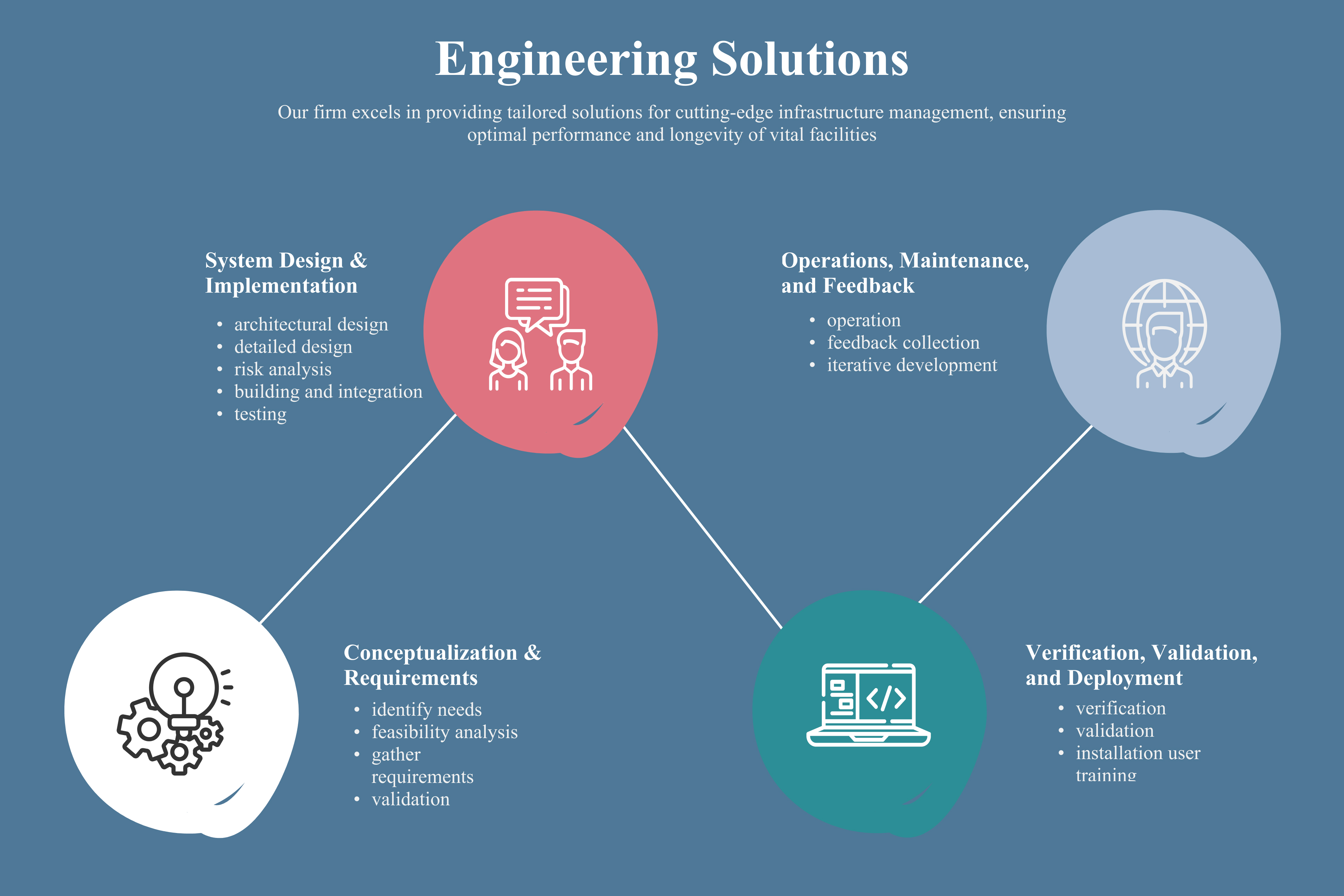Engineering Solutions
Our company specializes in delivering exceptional solutions for cutting-edge maintenance and management technologies, catering to a wide range of critical infrastructure, including roads, slopes, bridges, dams, and railways. We stand as a recognized leader in this field, committed to offering innovative and tailored approaches to ensure the optimal performance and longevity of these vital facilities

We use the term "Solution Engineering" to describe our process of configuring and executing solutions. When we refer to a "solution," we are talking about a course of action that, once implemented, achieves a specific desired outcome. In this context, we employ the term "engineer" as a verb, signifying the skillful and artful arrangement or realization of these solutions. This use of "engineer" is akin to phrases like, Our top management team engineered a remarkable turnaround in the company's financial performance.
Conceptualization & Requirements
- Identify Needs: The process begins by identifying the needs and requirements of the project or solution. This includes understanding client or stakeholder expectations, constraints, and objectives.
- Feasibility Analysis: Evaluate the feasibility of the proposed solution, considering technical, economic, operational, and scheduling factors. Determine if the project is viable.
- Gather Requirements: Define and document the detailed requirements of the system or solution. This includes functional, performance, safety, and other specifications.
- Validation: Validate requirements with stakeholders to ensure they accurately represent their needs.
System Design & Implementation
- Architectural Design: Create a high-level system architecture that outlines the overall structure and components of the system.
- Detailed Design: Develop detailed designs for each component, including specifications, interfaces, and subsystems.
- Risk Analysis: Identify and assess potential risks and mitigation strategies.
- Building and Integration: Develop and build the system or solution based on the design specifications. Integrate various components to ensure they work together cohesively.
- Testing: Conduct thorough testing, including unit testing, integration testing, and system testing, to verify that the system meets the requirements.
Verification, Validation, and Deployment
- Verification: Confirm that the system has been built correctly according to the design specifications.
- Validation: Ensure that the system meets the user's needs and performs as expected in its intended environment.
- Installation: Deploy the system or solution in the target environment.
- User Training: Provide training to users and operators to ensure they can use the system effectively.
Operations, Maintenance, and Feedback
- Operation: Oversee the ongoing operation of the system, monitoring its performance and making necessary adjustments.
- Maintenance: Perform regular maintenance and updates to keep the system reliable and up to date.
- Feedback Collection: Continuously gather feedback from users and stakeholders to identify areas for improvement.
- Iterative Development: Use feedback to make iterative improvements to the system or solution.